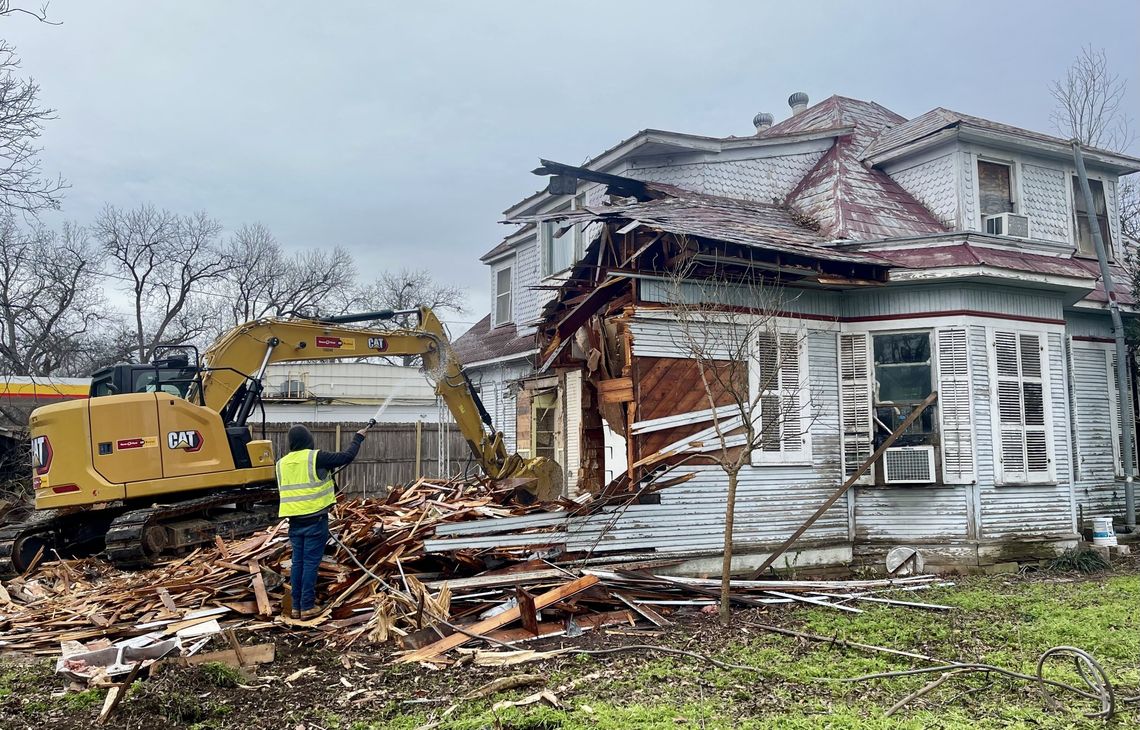BASTROP — A rallying cry from the former owners of a 120-yearold home added to the city’s development discussions last week, as many who knew “the Bastrop f lower lady” gathered at City Hall to voice their concerns.
The century-old residence of Sheridan Limmer’s “yiayia,” or Greek grandmother, Mary Papadaki LeBlanc, was demolished Jan. 27 despite public contest.
“Aside from her family, this home and its yard was Yiayia’s pride and joy,” Limmer said, noting that the vibrant garden was well known amongst the community.
According to her call for support on social media, Limmer’s family had hoped to sell the property to someone that would respectfully restore it and “preserve its glory,” but the new owner made their intentions clear af ter immediately moving a large excavator onto the property upon closing.
“Set on demolition f rom day one,” he would not resell the property, despite offers, Limmer added.
The home was originally built on Chestnut Street in 1906 before being moved to 1005 Pecan St., where it now lies toppled. It was never given an official “historic” status by the Historic Landmark Commission — something that the previous owners had plenty of time to do, according to Stephen Reveile of Heart of Texas Demolition.
Li s t ings state the 18,000 - squa re - foot property was sold Jan. 6 in poor condition for an undisclosed amount. The building was “way beyond repair,” Reveile said, with significant termite and water damage.
The buyer plans to apply for P4 zoning approval in order to build two fourplexes, 16 parking spaces and potent ia l ly another structure, but may face compl icat ions with pending Bastrop Building Block Code amendments.
“We are a cautionary tale,” Limmer said. “The current zoning codes in the city of Bastrop do not protect the small town charm of the city and are allowing money driven developers like this one to destroy single family dwellings, replacing them with more dense housing, all for the sake of profit.”
However, according to Reveile, the buyer is not in the wrong here.
“I empathize with both sides, but the developer bought it,” he said. “To make it historic, it comes with responsibilities, it affects your future ability to develop. The family, all along, didn’t want any part of it. They sold it. (The developer) knows what he is doing, it needed about $1.5 million spent on it and it’s only a $400,000 property. He knew he could tear it down, and he knew they dropped the ball.”
Despite the tension, the developer’s demolition team is donating the doors and interior elements of the property for a greenhouse to be constructed downtown in honor of yiayia Papadaki, he added.
.png)






